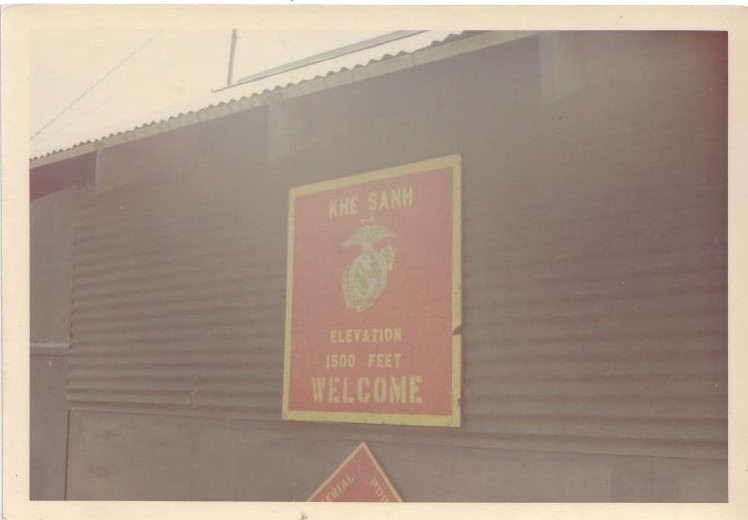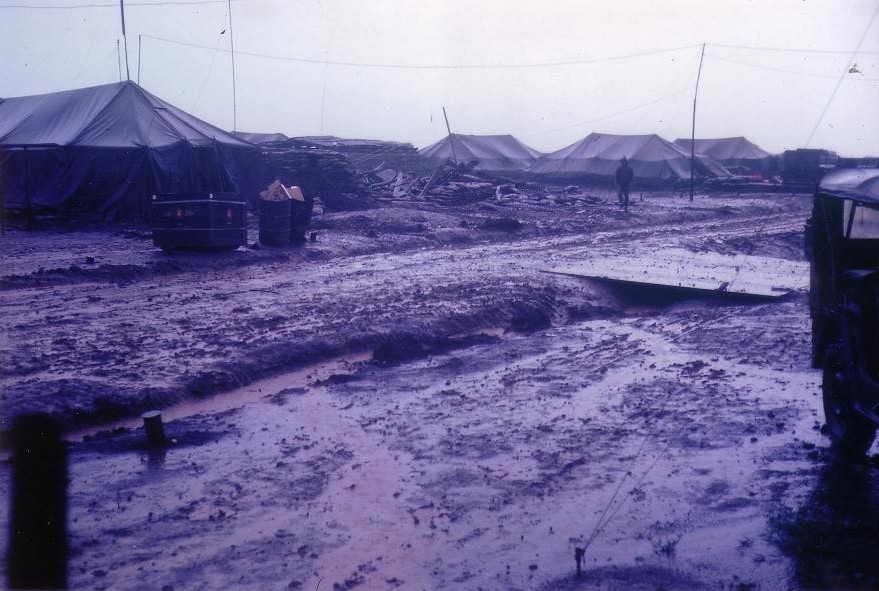On the top floor of the National Museum of the Marine Corps in Quantico, the open room is hot and dry, and looks down on the surrounding hills like Hill 881 in an exhibit that is set up like Khe Sanh Marine Base in South Vietnam, circa 1968. The Khe Sanh Marine Base was a hot point in the Vietnam War where many Marines were killed, and for those that survived, this replica room could bring on a bout of post traumatic stress from their time as a combat soldier there. If this happens, there is now a Respite Room set up in the museum where they can go and gather their thoughts for instances like this.
Michael D. Salmon, USMC retired, father of this writer, photographed scenes pictured here on his tour of duty in 1967 at the Khe Sanh Marine Base, Vietnam. 
“Some of our visitors are working through post-traumatic stress, and the museum’s exhibits may trigger an emotional response. The Respite Room is a way for us to recognize that and provide support for them,” said Major General James W. Lukeman USMC (Ret), President and CEO of the Marine Corps Heritage Foundation. This Respite Room was the idea of a museum docent volunteer and donor of the MCHF who suffered from PTSD after serving in Vietnam.
On June 12, the Marine Corps Heritage Foundation held the dedication ceremony for the Thomas L. Murtaugh, Ph.D. Respite Room, where visitors can gather their thoughts in a quiet space away from the activity of the main exhibit areas. According to the Foundation, “the Respite Room features a calming environment with soft lighting, tranquil colors, and soothing decor. Comfortable seating and wooden wall panels help to block out exterior noise, creating a serene space where visitors can find peace and quiet amidst the museum's powerful exhibits.”
The room was named after Dr. Thomas Muraugh who worked at the Veterans Administration for 24 years as a Clinical and Research Psychologist and was internationally known as an expert in the diagnosis and treatment of Post Traumatic Stress Disorder. Although the respite rooms are adopted by the military to help combat veterans, PTSD can affect anyone who experienced trauma. According to the National Institute of Mental Health, “Post-traumatic stress disorder is a disorder that develops in some people who have experienced a shocking, scary, or dangerous event.”
The opening of this room is timely as the museum prepares to open galleries covering the Corps’ history from 1976 to the present, and this may present a situation where veterans that were part of that history may also be visiting in person.
The intense sounds of fireworks can also trigger PTSD in combat veterans or anyone who has experienced gunfire.
Belvoir Museum Facilities
At the National Museum of the United States Army at Fort Belvoir they are following a similar path with visitors and veterans, but do not have a "Respite Room," by name.
The museum is full of memorabilia and artifacts, like the Marine Museum, that could trigger an emotional response.
"Museum staff and volunteers have been familiarized with how to recognize and respond to support a visitor who might benefit from some additional information or assistance, such as sharing the times for reduced-sensory showings of the feature film, anxiety coping devices, a sensory-sensitivities navigation map or noise canceling headphones," said Susan Smullen, public affairs officer at the museum. Museum staff can also provide a visitor with a quiet decompression space when needed, she added.
 During Vietnam’s rainy season at the US Marine base in Khe Sanh.
During Vietnam’s rainy season at the US Marine base in Khe Sanh.
